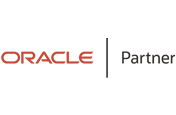Unable to find what you're searching for?
We're here to help you find itOracle WebLogic Server 12c: Administration II Ed 3 Course Overview
The Oracle WebLogic Server 12c: Administration II Ed 3 course is an advanced training program designed for individuals who want to deepen their skills in administering Oracle WebLogic Server 12c. This course builds upon the knowledge gained in the Oracle WebLogic Server 12c: Administration I course and covers a broad range of topics, including upgrading WebLogic Server, creating and using domain templates, server startup and crash recovery, and advanced scripting with WLST.
Learners will also explore RESTful management services, SSL configuration, shared Java EE libraries, application work managers, and security realms. The course dives into disaster recovery, domain partitions, managing data sources, the diagnostic framework, and Coherence for clustering support. Optional modules on application staging, deployment plans, and production redeployment offer additional insights for complex environments.
By completing the course, participants will be well-equipped to manage and troubleshoot Oracle WebLogic Server 12c environments efficiently, ensuring high availability, performance, and security. This knowledge is invaluable for IT professionals aiming to excel in Oracle WebLogic administration roles.

Purchase This Course
| Day | Time |
|---|---|
|
to
|
to |
♱ Excluding VAT/GST
Classroom Training price is on request
You can request classroom training in any city on any date by Requesting More Information
♱ Excluding VAT/GST
Classroom Training price is on request
You can request classroom training in any city on any date by Requesting More Information

1-on-1 Training
Schedule personalized sessions based upon your availability.

Customized Training
Tailor your learning experience. Dive deeper in topics of greater interest to you.

4-Hour Sessions
Optimize learning with Koenig's 4-hour sessions, balancing knowledge retention and time constraints.

Free Demo Class
Join our training with confidence. Attend a free demo class to experience our expert trainers and get all your queries answered.
To ensure that you are well-prepared and can derive maximum benefit from the Oracle WebLogic Server 12c: Administration II Ed 3 course, we recommend that you possess the following prerequisites:
These prerequisites are designed to provide you with the foundational knowledge required for the advanced topics covered in the course. If you need to strengthen your background in any of these areas, Koenig Solutions offers a variety of foundational courses to help you prepare.
Oracle WebLogic Server 12c: Administration II Ed 3 is an advanced training course designed for IT professionals seeking to master WebLogic Server.
In the Oracle WebLogic Server 12c: Administration II Ed 3 course, participants will deepen their understanding of advanced WebLogic Server administration tasks, including automation, security, disaster recovery, and application deployment strategies.

